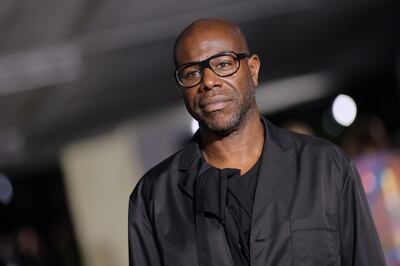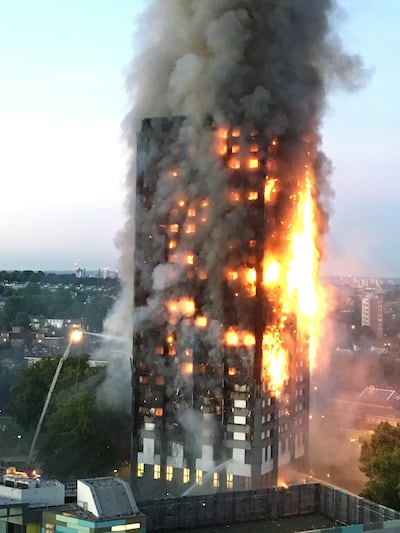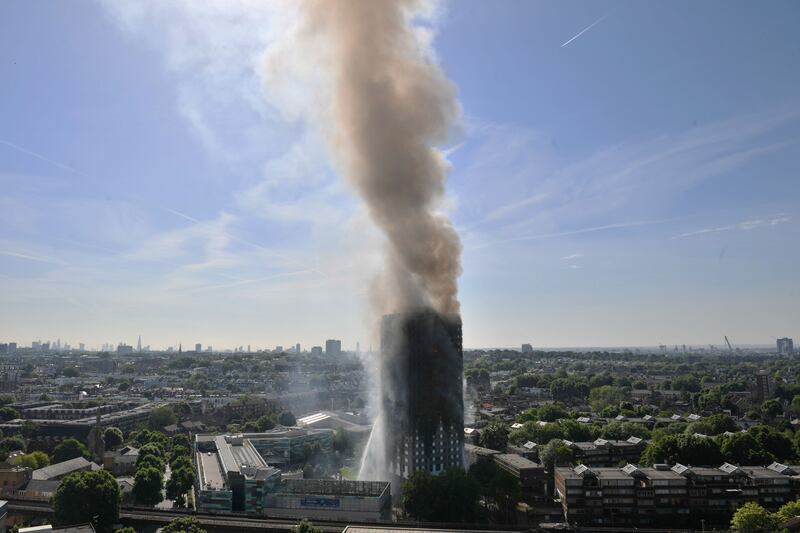Sir Steve McQueen will showcase a project next month at the Serpentine South Gallery in London, depicting the aftermath of the 2017 Grenfell Tower fire.
Produced in the months following the tragedy, which killed 72 people in North Kensington, West London, the 24-minute film includes close-up shots of the building before it was covered with hoarding. McQueen wanted to create a record to make sure the horrors would never be forgotten.
McQueen, who was born in the area and was knighted last year, says the Grenfell project is devoted to those who died in the fire, as well as the survivors and the bereaved.
"I feared once the tower was covered up it would only be a matter of time before it faded from the public’s memory. In fact, I imagine there were people who were counting on that being the case," he wrote in the exhibition guide. "I was determined that it never be forgotten. So, my decision was made for me."

The exhibition comes at a time when survivors and families are still awaiting clarity and closure, with both an inquest and criminal investigation ongoing more than five years after the tragedy. Authorities have not yet implemented the recommendations of the initial inquest report, since its release four years ago.
The 12 Years A Slave, Uprising and Small Axe director said he first visited Grenfell Tower in the early '90s. "I went to visit a friend who had just had her first child," he said. "She was Italian and her partner was Algerian. We had gone to art school together in Chelsea and I wanted to see this new beginning. I remember the views from the window and thinking I had never been up this high in London before. The viewpoint was amazing."
His father was close friends with one of the community members Rhodan Gordon, who opened the black cultural centre Back-a-Yard in the late '60s, and later the Black People’s Information Centre.
"What I loved was the community," he added. "All the people with different backgrounds from all over the world. There was a wonderful energy, a familiarity, an exchange which was unlike anywhere else in London. Also, it was cool. There was a buzz. There was proudness. You were in the right place."
McQueen said when he heard about the fire, he felt he needed to do something. "I was in pain like many other people at witnessing a tragedy that simply did not have to happen, yet did due to deliberate neglect," he said. "The question for me at the time was, how do I engage with this tragedy? The only thing I could think of was to visit the building again, after nearly 30 years."

In an interview with The Guardian, he said some people will be “a little bit disturbed” by the project. He added: “You must understand that the violence that was inflicted on that community was no joke.
“When you make art, anything half decent … there are certain people you will possibly offend. But that is how it is.”
Of the 72 who died in the fire, 85 per cent were from ethnic minority backgrounds. McQueen believes the disaster is inextricably linked to issues of race and poverty. In 2021, on Annie Mac’s podcast Changes, he explained: “It happened because no one was listening to poor people. The only reason these people died was because they were poor.”
Grenfell will be presented at Serpentine South from April 7 to May 10, after a period of private viewings, prioritising survivors and bereaved families. Later, it will become part of the Tate and Museum of London's collections.







